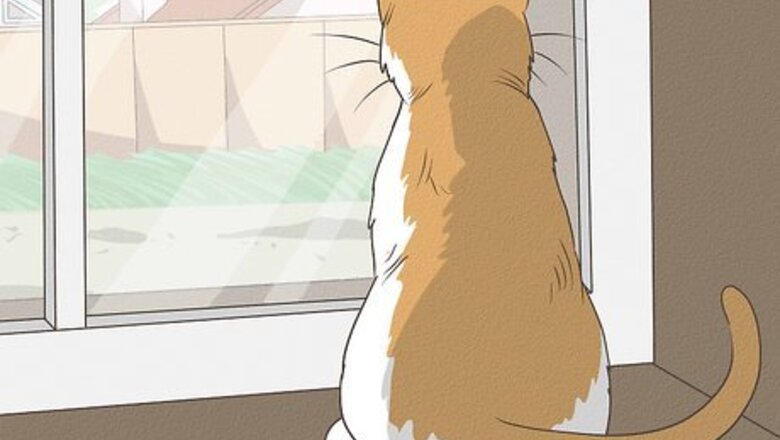
views
Curbing Hunting Behavior

Keep your cat indoors during certain times. You can minimize the amount of hunting your cat engages in by monitoring when your cat goes outside. Keep your cat indoors when animals like birds and mice are active. Birds are most active an hour after sunrise and an hour before sunset. Therefore, try keeping your cat indoors during these times. Keeping your cat indoors at all times is a more permanent solution. Also, keeping it indoors may protect it from other dangers such as cars, hawks, and opossums. Because birds come out and feed after bad weather, keep your cat indoors after bad weather, as well. Mice and other rodents tend to venture out at night. Try keeping your cat indoors during the night to reduce its killing of rodents.
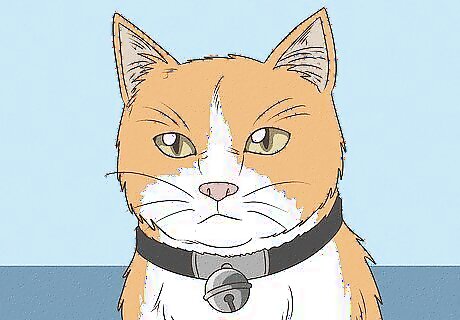
Attach a bell to its collar. While some studies find that this method works, other studies claim that it is ineffective. Nevertheless, you can still try attaching a bell to your cat’s collar to try to curb your cat’s hunting behavior. The sound made by the bells will alert birds and other prey that your cat is nearby. This way, they can avoid your cat, as well as your backyard, when it is outside. Attach one or two bells to a snap-open collar. For the safety of your cat, choose a snap-open collar to prevent it from being snagged on branches.
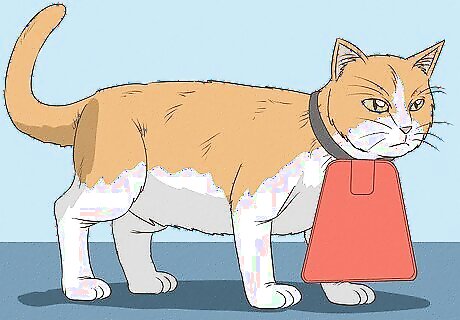
Try a cat bib. Studies show that a cat bib is a pretty effective method for curbing a cat’s hunting behavior. Attach the bib to your cat’s snap-open or elastic collar before it goes outdoors. The bib hangs loosely over your cat’s chest. A cat bib is particularly effective in protecting birds from being hunted. The bib works by gently interfering with your cat’s coordination and precise timing at the moment it decides to attack.
Making Hunting Less Appealing

Have your cat hunt for its food. Make hunting less appealing by engaging your cat in predatory behavior in order to obtain its food. To do this, hide food around the house, and have your cat seek out the food. You can also use a puzzle/scatter feeder to feed it portions of its meals. You can either buy a feeder or make one at home. Clean an empty plastic bottle. Cut out holes in the bottle that are big enough to allow cat food through, but small enough to make it a challenge. Fill ¼ of the bottle or less with dry food and treats. Place the bottle in front of your cat. You cat will have to roll and knock the feeder to obtain the food.
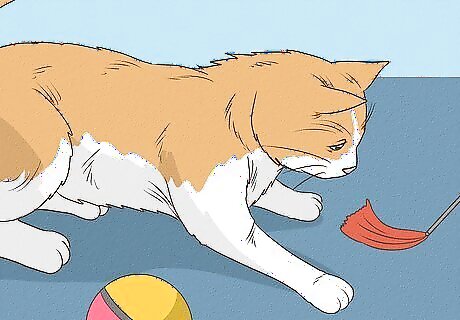
Play with your cat. Channel your cat’s hunting behavior into more acceptable activities through play. Cats generally like to play with small, lightweight objects that are easy to flick, swat, and chase. You can either buy store bought toys, or make homemade toys for your cat. It is recommended that you play with your cat at least 30 minutes per day. Store bought toys such as fishing rod-style toys, plastic balls with or without bells inside, or sisal-wrapped toys that your cat can dig its nails into are great examples of toys that will keep your cat entertained. Alternatively, round, plastic shower curtain rings, ping-pong balls, paper bags with the handles removed, empty cardboard toilet paper or paper towel tubes, and cardboard boxes are great examples of homemade toys and devices that cats love to play with. Remember to supervise your cat's play time to prevent it from ingesting any of the toys' parts, especially if your cat has a tendency to hunt and eat its prey.
Protecting Backyard Birds
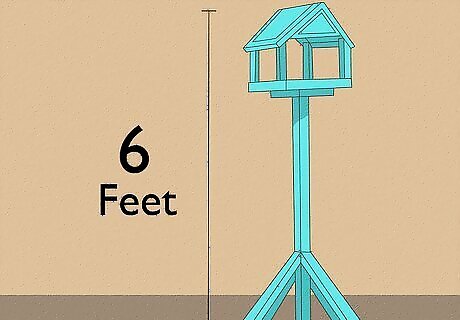
Make sure your bird table is tall and on a pole. Make sure your bird table is high enough to prevent easy access by your cat. The bird table should be at least six feet tall. Also, having your table on single pole makes it difficult for your cat to climb up. Additionally, spread Vaseline on the poles of your bird tables to make it extra difficult for your cat to climb.
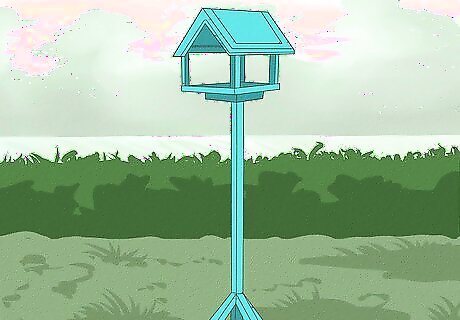
Place your bird table in open area. Keep your bird tables away from surfaces that your cat can jump from, like fences and trees. Also, do not place the table near shrubbery that cats can hide in and attack from. If you are using a hanging bird feeder, place it on a branch that your cat cannot access, or place it on a small, weak branch that will break under a cat’s weight.

Grow prickly plants around the table. Place spiny or prickly plants around the bottom of your bird table or feeder. These plants will make it uncomfortable and hard for your cat to get to the bird table. You can also place these plants with your bushes to make it difficult for your cat to hide in and launch a surprise attack from.



















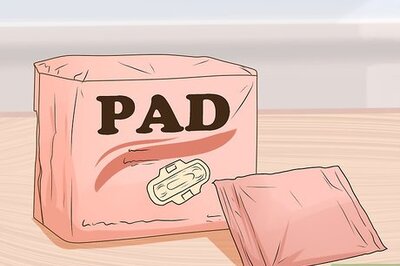
Comments
0 comment